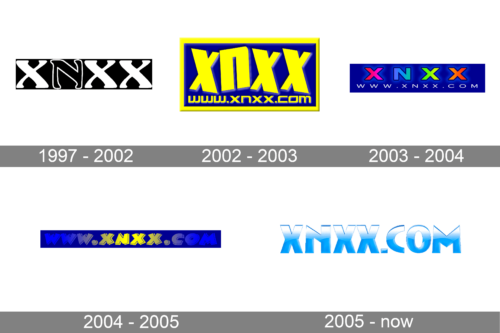
- Version
- Download 85
- File Size 60.81 KB
- File Count 1
- Create Date December 10, 2024
- Last Updated December 10, 2024
Olympiacos is a renowned professional football club based in Piraeus, Greece. Founded in 1925, it is the most successful football club in the country, boasting 46 Greek league titles and 28 Greek Cup wins. Olympiacos competes in the Greek Super League, with a rich history of national and international achievements.
Olympiacos Logo Evolution
As the most decorated Greek club, Olympiacos stands among the world’s top 10 teams in terms of total trophies, with 78 to its name. The club's visual identity has evolved over the years, with subtle refinements to its logo that align with the team's growth and successes.
History of Olympiacos
Olympiacos, with its strong historical foundation, has become a dominant force in Greek football. It has outpaced all other Greek clubs in terms of titles, maintaining a leadership role in the Greek Premier League. The club was named and its logo created by Notis Kamperos, one of its founders. Since its inception, the logo has predominantly featured a red color scheme, with a central figure of an Olympic athlete adorned with an olive wreath.
1925 – 1959: The First Logo
The original Olympiacos logo, created in 1925, remained in use for over two decades. It featured a solid red crest with a gold outline and a top banner of three horizontal red and white stripes. At the crest's center, a golden profile of an Olympic athlete surrounded by an olive wreath symbolized the club’s Olympic ideals. The Greek club's name was displayed in gold capitals above a red stripe.
1959 – 1973: The Circular Badge
In 1959, Olympiacos introduced a circular medallion logo that featured vertically striped red and white patterns outlined in gold. The top part of the logo had a solid gold background with the club’s name written in bold red, separated into two levels, with Greek letters outlined in black for better visibility.
1973 – 1980: Refining the Shield
Olympiacos updated its logo in 1973 with a wider top banner made of red and white stripes. The logo featured a circular medallion with the profile of the Olympic athlete in the center, framed by Greek lettering and the year "1925" marked at the top left corner.
1980 – 1985: A More Defined Athlete
The 1980 redesign featured a more defined portrait of the Olympic athlete, now facing left. This logo, set against a white background with a red double frame, added a sense of elegance and balance, with Greek lettering arranged around the perimeter.
1985 – 1987: A Bolder Look
The 1985 update enlarged the athlete’s image and thickened the outlines. The frame turned solid red, and the Greek lettering changed to a bold white capitalized font. Two stylized six-pointed stars, drawn in three crossed lines, separated the text elements.
1987 – 1992: Further Refinements
In 1987, Olympiacos made adjustments to the logo’s design. The athlete’s profile was reworked, with a more tilted chin and enlarged olive wreath. The logo retained the classic red and white color scheme but featured a slightly darker red tone. The lettering was placed along the top edge of the circle, separated from the “1925” datemark by small solid dots.
1992 – 1995: Lightening the Red
In 1992, the red in the logo was lightened once more, and the athlete’s profile was slightly repositioned. The circular emblem’s border was composed of two red stripes and one white stripe, creating a more dynamic and refined look. The datemark was removed, and the full inscription returned, now separated by a red dot.
1995 – 2001: Sharper and More Energetic
The 1995 redesign saw an even lighter red shade, creating a more energetic appearance. The badge was redrawn with sharper lines and thinner contours, enhancing the visual impact. The lettering was shortened, and the "1925" datemark was reinstated, now positioned beneath the athlete’s portrait.
2001 – 2003: Celebrating the 30th Title
In 2001, Olympiacos won its 30th league title, marking the occasion with an update to the logo. Three five-pointed golden stars were added above the crest, signifying the milestone achievement.
2003 – 2013: Bold Redesign
The 2003 redesign gave the Olympiacos logo a solid red frame with white lettering. The inscription was elongated, with part of it in bold lines. The "1925" datemark was moved to the main section of the logo, placed next to the athlete’s profile. The athlete's image was redrawn with bolder lines, providing a more balanced and professional appearance.
2013 – Present: Four Golden Stars
In 2013, following Olympiacos' 40th league title, the logo was updated again. Four gold stars were added to the badge, each placed above the red and white logo in a semi-arched formation. The stars were redrawn in a smaller size to maintain balance and not overcrowd the design.
Olympiacos' Colors
- Olympiacos Red: HEX: #E60012; RGB: (230, 0, 18); CMYK: (0, 100, 92, 0); PANTONE: PMS 186 C
- Olympiacos White: HEX: #FFFFFF; RGB: (255, 255, 255); CMYK: (0, 0, 0, 0); PANTONE: PMS White
The Olympiacos logo has evolved over the years to reflect the club's legacy and continued success, with each design update reinforcing its iconic status in Greek football.
| File | Action |
|---|---|
| Olympiacos Logo.png | Download |








